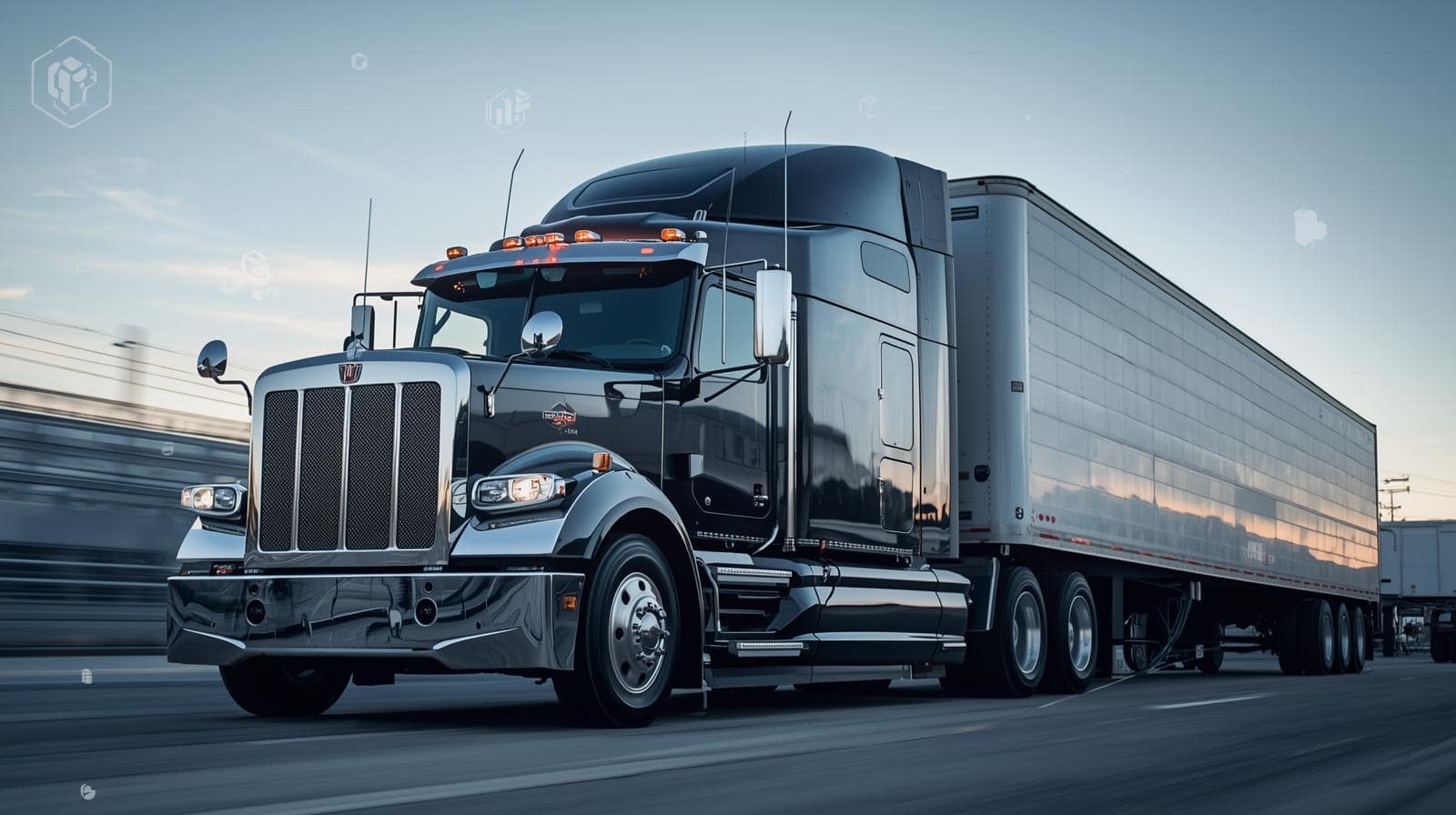Truck inspections are an essential part of ensuring the safety and compliance of commercial vehicles. For trucking companies, owner-operators, and fleet managers, passing a Department of Transportation (DOT) truck inspection is crucial for avoiding fines, penalties, and accidents. Understanding the DOT truck inspection checklist, requirements, and the process can save time and money while keeping your fleet on the road. In this article, we’ll dive into everything you need to know about DOT inspections, including where to get an annual inspection, how to upload DOT inspection results to the FMCSA, the cost of a DOT inspection, and more.
What Is a DOT Inspection?
A DOT inspection is a thorough examination of a commercial vehicle to ensure that it complies with federal safety regulations and is in good working condition. The Federal Motor Carrier Safety Administration (FMCSA) sets the standards for these inspections, and the Department of Transportation (DOT) carries out inspections to ensure commercial vehicles meet these regulations.
Why Are DOT Inspections Important?
DOT inspections are vital for several reasons:
- Safety: Ensuring that trucks are roadworthy and meet safety standards reduces the risk of accidents caused by vehicle malfunctions.
- Regulatory Compliance: The FMCSA mandates regular inspections to ensure that trucking companies and drivers comply with federal safety standards.
- Preventive Maintenance: Regular inspections help identify maintenance issues before they become serious problems that could lead to breakdowns or accidents.
- Avoiding Fines: Failing a DOT inspection can lead to fines, vehicle out-of-service orders, or even suspension of a truck’s operating privileges.
The DOT inspection checklist is a list of vehicle components that must be checked during these inspections. Common areas covered include brakes, tires, lights, suspension systems, and more. Regular inspections help prevent costly repairs and keep your fleet operating smoothly.
Types of DOT Inspections
There are several types of DOT inspections, each focusing on different aspects of a commercial vehicle. The most common inspection levels include:
- Level I – Full Inspection: The most comprehensive inspection, covering both the vehicle and the driver.
- Level II – Walk-Around Inspection: An inspection where the officer inspects the vehicle while it is stationary, checking items such as tires, lights, and brakes.
- Level III – Driver-Only Inspection: This inspection focuses on the driver’s credentials and driving record.
- Level IV – Special Inspection: This is a one-time inspection used to gather data about a specific safety issue.
- Level V – Vehicle-Only Inspection: A complete inspection of the vehicle while the driver remains with their truck.
- Level VI – Enhanced NAS Inspection: For vehicles transporting hazardous materials, this inspection is more detailed.
Where to Get Annual DOT Inspection
One of the most common questions truckers have is where to get annual DOT inspection. Every commercial vehicle is required to undergo an annual DOT inspection to ensure that it meets safety standards and is roadworthy.
Authorized Inspection Locations
Annual DOT inspections must be performed by a certified inspector, often found at:
- Certified Inspection Stations: These are inspection centers authorized by the FMCSA or state agencies to perform DOT inspections. They typically offer full inspection services, including paperwork and certification.
- Fleet Maintenance Shops: Many larger fleets have their own maintenance shops with certified inspectors who can perform annual DOT inspections for their vehicles.
- Truck Dealerships: Many truck dealerships offer DOT inspections as part of their services, especially for new trucks or vehicles requiring repairs.
- Third-Party Inspection Centers: Independent third-party companies often specialize in DOT inspections. These centers are certified to perform thorough inspections and ensure compliance with federal regulations.
What to Expect During an Annual DOT Inspection
When you take your truck in for an annual DOT inspection, you can expect a thorough examination of the following components:
- Brakes: Brake systems will be inspected for wear and proper function.
- Tires and Wheels: Inspecting the tread depth and overall condition of the tires.
- Lights: Ensuring all lights, including brake lights, turn signals, and headlights, are working correctly.
- Suspension and Steering: Checking for any suspension or steering issues that could affect vehicle handling.
- Frame and Chassis: The frame and chassis will be inspected for any cracks, damage, or signs of wear.
- Fuel Systems: Inspecting the fuel tanks, lines, and connections for leaks or damage.
The inspector will issue a report detailing the results of the inspection. If the truck passes the inspection, it will be issued a certification sticker indicating that the vehicle is compliant with DOT regulations.
Can I Do My Own Annual DOT Inspection?
One of the most common questions among truckers: “Is whether I can perform my own annual DOT inspection”. While the idea of conducting your own inspection might seem convenient, the answer is generally no—only certified inspectors can officially perform a DOT inspection.
The Role of a Certified Inspector
DOT inspections require a certified inspector to perform a comprehensive and standardized check of your truck, following the guidelines outlined by the FMCSA. These certified inspectors are trained to identify potential safety hazards that may not be immediately obvious to untrained individuals.
However, as a truck owner or operator, you can perform routine pre-trip inspections and regular maintenance on your vehicle to ensure it remains in good condition. Conducting daily checks on critical systems like tires, lights, and brakes is essential for identifying potential issues before your official DOT inspection.
Pre-Trip Inspection
A pre-trip inspection is a daily check performed by the driver to ensure the vehicle is safe to operate. While this is not a substitute for an annual DOT inspection, it helps catch minor issues early and ensures that your vehicle is in safe operating condition. Pre-trip inspections typically include:
- Checking tire pressure and tread depth
- Inspecting lights and electrical systems
- Ensuring the brakes and steering are functioning properly
- Looking for any leaks or visible damage
Pre-trip inspections are required by law and can help avoid surprises during your DOT inspection. Keeping a record of these inspections can also be helpful in case your truck is inspected by the DOT.
How to Upload DOT Inspection to FMCSA
Once your truck has passed the DOT inspection, you will need to upload the inspection results to the FMCSA (Federal Motor Carrier Safety Administration) database. This is necessary for compliance and ensures that your vehicle is recorded as meeting federal safety standards.
The Importance of Uploading DOT Inspection Results
Uploading your DOT inspection results to the FMCSA is crucial for maintaining compliance with federal regulations. The FMCSA requires that all commercial vehicles undergo annual inspections and that the results are reported. This ensures that your vehicle is properly documented and avoids penalties for non-compliance.
How to Upload DOT Inspection to FMCSA
Uploading your DOT inspection to the FMCSA is a straightforward process. Follow these steps:
- Obtain the Inspection Report: Once your vehicle passes the DOT inspection, you will receive an inspection report from the certified inspector.
- Access the FMCSA Portal: Log into the FMCSA portal, where you can manage your fleet’s compliance information.
- Enter Inspection Details: Input the details of the inspection, including the inspection date, inspector information, and vehicle information.
- Upload Documentation: Attach the inspection report and any other required documents, such as proof of certification or maintenance records.
- Submit for Review: After submitting the inspection information, the FMCSA will review the details and confirm that your vehicle complies with safety regulations.
If you’re using a fleet management system like Ezlogz, the platform may offer integration with FMCSA’s database, making it easier to upload your inspection results and manage compliance documentation.
How Much Does a DOT Truck Inspection Cost?
A DOT truck inspection cost varies depending on the location, type of inspection, and the service provider. Generally, a DOT inspection will cost between $50 and $200, but prices may fluctuate based on your specific needs.
Factors Influencing the Cost
Several factors can affect the cost of a DOT inspection:
- Location: Inspection fees may vary based on where you get the inspection, with prices often being higher in urban areas.
- Inspection Type: Comprehensive inspections, such as Level I inspections, tend to cost more than basic checks.
- Size and Type of Vehicle: Larger trucks or trucks with specialized equipment may incur higher inspection fees due to the complexity of the inspection process.
- Repair Costs: If your truck fails the inspection and requires repairs, those costs will be added to the overall price.
Ways to Save on DOT Inspection Costs
To keep costs down, consider the following:
- Shop Around: Compare prices from different certified inspection centers to find the best deal.
- Routine Maintenance: Keep your truck well-maintained to avoid costly repairs or failure during the inspection.
- In-House Inspections: If you have a fleet, consider training your maintenance team to handle some inspections in-house, saving you the cost of external inspections.
How Long Does a DOT Inspection Take?
The duration of a DOT inspection depends on the inspection level, the condition of the vehicle, and the inspector’s experience. On average, a DOT inspection takes between 30 minutes and 2 hours.
Factors Affecting the Duration
- Inspection Level: A Level I inspection, which is the most comprehensive, typically takes the longest—about 1.5 to 2 hours. A Level II or III inspection may take less time, as it focuses on specific aspects of the vehicle or driver.
- Vehicle Condition: If the truck is in good condition and doesn’t have any major issues, the inspection will likely take less time.
- Inspector Efficiency: Experienced inspectors may complete the process more quickly than those who are less familiar with the vehicle.
While the DOT inspection itself may not take long, it’s important to plan for potential delays, especially if repairs are needed after a failed inspection.
Ensuring that your truck meets DOT inspection requirements is critical for maintaining safety, compliance, and avoiding costly fines. By following the DOT truck inspection checklist and understanding the inspection process, you can be prepared for your annual inspection and ensure your vehicle stays in top shape.
If you need assistance with managing your DOT inspections or tracking compliance, Ezlogz offers robust tools to help streamline the process. Contact Ezlogz today for more information on how our fleet management solutions can support your business.













